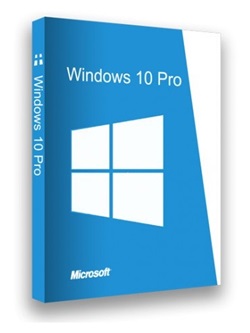Windows 10 is continuously receiving new releases that are available to users at no additional cost
Windows 10 is a series of personal computer operating systems produced by Microsoft as part of its Windows NT family of operating systems. It is the successor to Windows 8.1 and was released to production on July 15, 2015, and to retail stores on July 29, 2015. Devices in enterprise environments may receive these updates more slowly or may benefit from long-term support steps that receive only critical updates, such as security patches, during the ten-year extended support life.
What’s new:- Languages: Arabic, English, German , Greek, French, Spanish, Italian, Dutch, Portuguese-Portuguese, Portuguese-Brazilian, Turkish!
One of the most notable features of Windows 10 is support for Universal Apps, an extension of the Metro-style apps first introduced in Windows 8. Universal apps can be designed to run across multiple Microsoft product lines with nearly identical code- including PCs, tablets, smartphones, embedded systems, Xbox One, Surface Hub and Mixed Reality. The Windows user interface has been revised to handle transitions between a mouse-centric interface and a touchscreen-optimized interface based on available input devices – especially on 2-in-1 PCs, both interfaces have an updated Start menu that includes elements of the traditional version of Windows 7 Windows 8’s tiled Start menu Windows 10 also introduced the Microsoft Edge web browser, a virtual desktop system, a window and desktop management feature called Task View, support for fingerprint and facial recognition login, new security features for business environments and DirectX 12.
– RAM: 1 gigabyte (GB)
System requirements: – Processor: 1 gigahertz (GHz) or higher. – Free hard disk space: 16 gigabytes (GB). – Graphics adapter: Microsoft DirectX 9 or newer graphics device.
– Additional requirements for using some features
– Touch functionality requires a tablet or monitor that supports multi-touch technology. – You need an active Internet connection and a screen resolution of at least 1024 x 768 pixels to access the Windows Store to download and run apps. How to install: * Create a bootable USB (recommended) with Rufus and boot!



 33/17
33/17
Leave a Reply